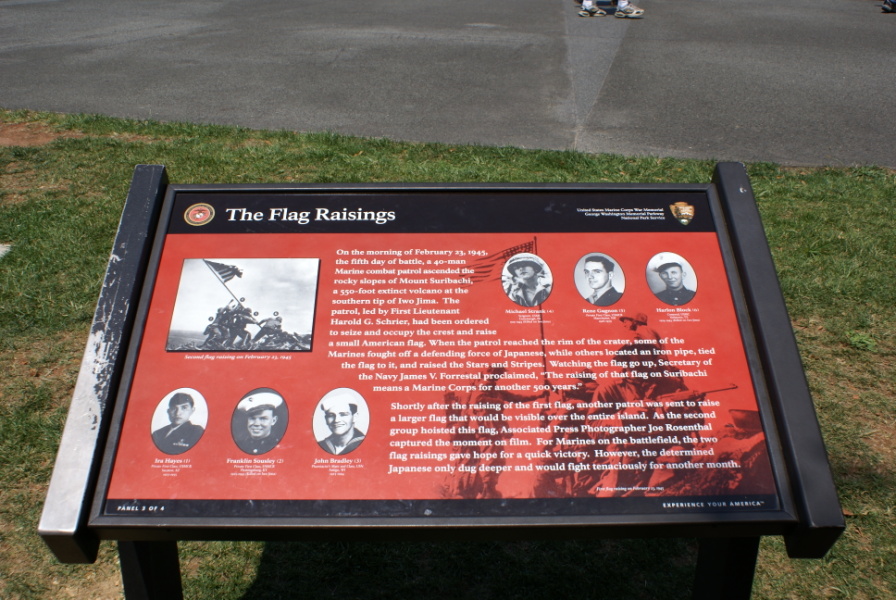| Prev |
heroicrelics.org Arlington National Cemetery Site Index Marine Corps War Memorial Gallery |
Next |
dsc32436.jpg
One of the informational signs around the memorial.
It reads
The Flag Raisings
On the morning of February 23, 1945, the fifth day of battle, a 40-man Marine combat patrol ascended the rocky slopes of Mount Suribachi, a 550-foot extinct volcano at the southern tip of Iwo Jima. The patrol, led by First Lieutenant Harold G. Schrier, had been ordered to seize and occupy the crest and raise a small American flag. When the patrol reached the rim of the crater, some of the Marines fought off a defending force of Japanese, while other located an iron pipe, tied the flag to it, and raised the Stars and Stripes. Watching the flag go up, Secretary of the Navy James V. Forrestal proclaimed, "The raising of that flag on Suribachi means a Marine Corps for another 500 years."
Shortly after the raising of the first flag, another patrol was sent to raise a larger flag that would be visible over the entire island. As the second group hoisted this flag, Associated Press Photographer Joe Rosenthal captured the moment on film. For Marines on the battlefield, the two flag raising gave hope for a quick victory. However, the determined Japanese only dug deeper and would fight tenaciously for another month.

| Time picture taken | Thu Jun 21 13:37:40 2007 |
| Location picture taken |
US Marine Corps Memorial Just outside the Arlington National Cemetery Arlington, VA |
| Prev |
heroicrelics.org Arlington National Cemetery Site Index Marine Corps War Memorial Gallery |
Next |